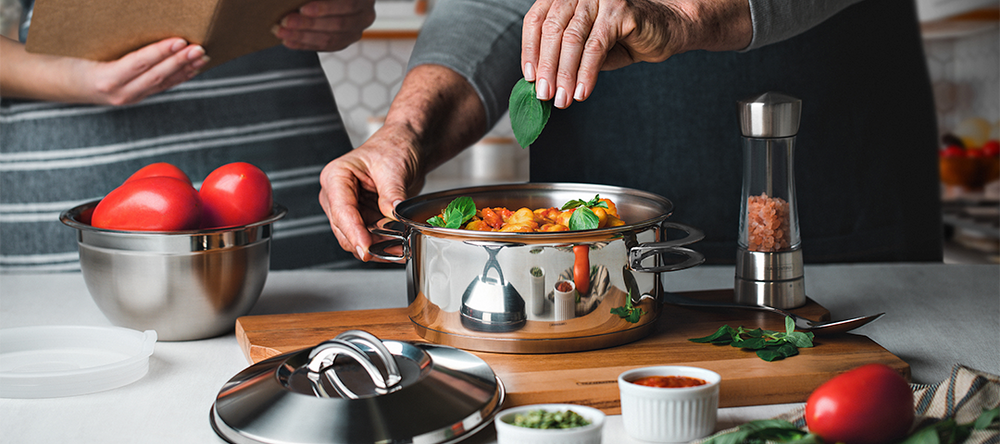Stainless steel cookware is a popular choice among both professional chefs and home cooks due to its durability, versatility, and sleek appearance. This guide explores the benefits, care instructions, and considerations for selecting stainless steel cookware, helping you make an informed choice for your kitchen.
What is Stainless Steel Cookware?
Stainless steel cookware is made from an alloy of steel and chromium, often with added nickel. This combination makes it resistant to rust, corrosion, and staining, ensuring longevity and a pristine appearance. High-quality stainless steel cookware often features an aluminum or copper core for improved heat conductivity.
Benefits of Stainless Steel Cookware
1. Durability: Stainless steel is exceptionally durable and can withstand high temperatures and heavy use without warping or damage. It is resistant to scratches, dents, and corrosion, making it a long-lasting addition to your kitchen.
2. Non-Reactive Surface: Unlike some other materials, stainless steel does not react with acidic or alkaline foods, ensuring that your meals retain their true flavors without any metallic taste.
3. Versatility: Stainless steel cookware is suitable for various cooking methods, including frying, sautéing, boiling, and baking. It can be used on all types of stovetops, including gas, electric, and induction, and is often oven-safe.
4. Easy Maintenance: Stainless steel is relatively easy to clean and maintain. Many stainless steel cookware pieces are dishwasher-safe, and they can often be scrubbed with abrasive pads without damaging the surface.
5. Aesthetic Appeal: With its sleek, polished finish, stainless steel cookware adds a touch of elegance to any kitchen. It retains its shine and looks new even after years of use.
Caring for Stainless Steel Cookware
Proper care ensures the longevity and performance of stainless steel cookware. Here are some essential maintenance tips:
1. Cleaning: After each use, wash stainless steel cookware with warm, soapy water. For stubborn residues or burnt-on food, soak the cookware in warm water before scrubbing with a non-abrasive sponge or brush. Avoid using harsh chemicals that can damage the surface.
2. Polishing: To maintain the shiny appearance of stainless steel, polish it occasionally with a mixture of vinegar and water or a commercial stainless steel cleaner. This helps remove water spots and fingerprints.
3. Avoid Overheating: Excessive heat can cause discoloration or warp the cookware. Use medium to low heat for most cooking tasks. Preheat the pan before adding oil or food to ensure even cooking.
4. Storing: Store stainless steel cookware in a dry place to prevent water spots and stains. If stacking is necessary, place a soft cloth or paper towel between pieces to avoid scratches.
Selecting Stainless Steel Cookware
When choosing stainless steel cookware, consider the following factors to ensure you select the best option for your needs:
1. Construction: Look for cookware with a multi-ply or clad construction, which includes layers of aluminum or copper sandwiched between stainless steel. This enhances heat conductivity and ensures even cooking.
2. Grade: High-quality stainless guide to steel cookware is typically made from 18/10 stainless steel, which contains 18% chromium and 10% nickel. This composition provides excellent resistance to rust and corrosion and a polished finish.
3. Weight: While heavier cookware indicates better quality and durability, ensure the weight is manageable for your cooking style and handling preferences.
4. Handles and Lids: Opt for cookware with sturdy, heat-resistant handles that are securely riveted to the pot or pan. Tight-fitting lids help retain moisture and heat, improving cooking efficiency.
5. Compatibility: Ensure the cookware is compatible with your stovetop, especially if you have an induction cooktop. Most stainless steel cookware is induction-compatible, but it’s always best to verify.
Conclusion
Stainless steel cookware is a versatile and durable choice for any kitchen, offering numerous benefits, including durability, non-reactivity, and aesthetic appeal.
By understanding its advantages, caring for it properly, and considering key factors when selecting, you can enjoy the many benefits of stainless steel cookware for years to come.


